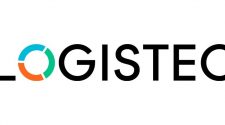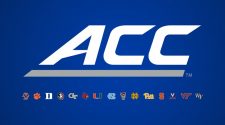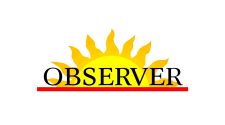On September 27, 2019, the Department of Treasury and the Internal Revenue Service (IRS) issued a proposed rule regarding how the employer mandate and certain federal nondiscrimination rules apply to health reimbursement arrangements (HRAs) and other account-based group health plans. The proposed rule was accompanied by a new blog post and affordability tool for employers interested in offering an HRA option to employees.
The proposed rule would establish a number of safe harbors related to a recent final rule to expand the use of HRAs by employers. Under the final rule, employers can offer an HRA to fund premiums and out-of-pocket costs for their employees in the individual health insurance market and Medicare beginning on or after January 1, 2020.
The goal of the proposed rule is to provide clarity for employers and ease administrative burdens for those that want to offer an HRA-IIHIC. The proposed rule’s various safe harbors are designed to help employers offer an HRA-IIHIC to full-time employees while avoiding income inclusion and liability under the employer mandate penalty. By offering these safe harbors, the Trump administration hopes to encourage employers to offer HRA-IIHICs to employees.
Comments are due on December 30, but the agencies note that taxpayers can generally rely on the proposed rule in developing HRA coverage options for 2020. The proposed rule will apply for any plan year that begins at least six months prior to the publication of any final rule. This suggests that little will change from the proposed to the final rule, which seems especially likely since federal regulators already solicited comment on Notice 2018-88, an earlier document closely related to the proposed rule as explained in more detail below.
Background
An HRA is a type of account-based group health plan that allows employers to fund medical care expenses for their employees on a pre-tax basis. An HRA must be funded solely by employer contributions and can only be used to reimburse an employee for the medical care expenses (as defined by the IRS) of the employee, dependents, or children under age 27 up to a maximum dollar amount. Any unused portion of the HRA in one year may be carried forward to subsequent years. If certain rules are followed, neither employer contributions nor employee reimbursements from an HRA are subject to income or employment taxes under federal law.
HRAs qualify for pre-tax treatment because they are considered group health plans. As group health plans, HRAs have historically not been able to be used to pay premiums for coverage in the individual market. HRAs must comply with certain group health plan requirements. Historically, to satisfy these requirements, an HRA had to be integrated with other group health plan coverage that meets these requirements. Put another way, previously, HRA contributions could only be sheltered from taxation if coupled with an ACA-compliant group health plan (not an individual policy).
Trump Administration Rule On HRAs
In June 2019, the Departments of Health and Human Services, Labor, and Treasury issued a new final rule to enable employers to offer 1) an HRA that is integrated with individual health insurance coverage (HRA-IIHIC, or an “individual coverage HRA”) to current and former employees and their dependents; and/or 2) a new “excepted benefits HRA” that could be funded up to $1,800 and used to pay premiums for excepted benefits, short-term plans, and COBRA premiums. Employers can begin offering these arrangements in 2020. The HRA rule was issued pursuant to President Trump’s executive order in October 2017, which also directed federal agencies to expand access to on short-term coverage and association health plans.
Employers that offer an HRA-IIHIC must follow certain requirements, known as integration rules that are discussed in detail here. Employees must enroll in qualifying “individual health insurance coverage,” which refers to coverage offered in the individual market as well as fully insured student health insurance. This does not include short-term coverage, coverage that consists solely of excepted benefits, health care sharing ministries, or TRICARE. The final rule also allows HRAs to be integrated with Medicare and authorizes a special enrollment period in the individual market for those who gain access to an HRA-IIHIC or a qualified small employer HRA.
Implications For Premium Tax Credit Eligibility And Employer Mandate
Most relevant to the current proposed rule, the final HRA rule prohibits an employee who is offered or receives an “affordable” HRA-IIHIC from being eligible for premium tax credits. This is because an HRA, as a self-insured group health plan, is considered an eligible employer-sponsored plan for purposes of subsidy eligibility.
An employer-sponsored plan is considered “affordable” if the employee’s contribution towards self-only coverage does not exceed the required contribution percentage of their household income. A plan provides minimum value if it covers at least 60 percent of total allowed costs and provides substantial coverage of inpatient hospitalization and physician services.
An individual who is eligible for an employer-sponsored plan that is both affordable and provides “minimum value” is ineligible for premium tax credits through the marketplace. Individuals are also ineligible for premium tax credits if they enroll in an employer-sponsored plan (even if that coverage is not affordable or does not provide minimum value).
These standards apply to HRAs. Thus, an individual is ineligible for premium tax credits if they are 1) covered by an HRA; or 2) eligible for an HRA that is affordable and provides minimum value. Under the final rule, an HRA or other account-based group health plan is “affordable” if the employee’s monthly required HRA contribution does not exceed one-twelfth of the product of the employee’s household income and the required contribution percentage. The employee’s required HRA contribution is calculated by subtracting 1) the monthly self-only HRA plan amount from 2) the monthly premium for the lowest-cost silver plan for self-only coverage offered through the marketplace in the rating area where the employee resides. If the “affordability” test is met, then the HRA also meets the minimum value standard. Additional details on the affordability and minimum value test are discussed here.
Whether an employee receives premium tax credits through the marketplace, in turn, affects whether an employer has violated the requirements of the employer mandate. The final HRA rule confirmed that employers could satisfy the employer mandate by offering an HRA-IIHIC that is affordable and meets minimum value requirements to at least 95 percent of its full-time employees and dependents.
Notice 2018-88
In the proposed HRA rule from October 2018, the agencies noted their intent to issue additional guidance on the employer mandate, tax exclusion rules, and other employer-related issues associated with the HRA rule. In November 2018, the IRS and Treasury Department issued Notice 2018-88 to request comment on a number of new safe harbors for the employer mandate and Section 105(h) of the Internal Revenue Code. As with the current proposed rule, the goal of the policies in Notice 2018-88 was to make it easier for employers to offer an HRA-IIHIC. The agencies solicited comment on Notice 2018-88; the responses to these comments are reflected in the latest proposed rule.
The Proposed Rule
The proposed rule clarifies the application of the employer mandate and the tax exclusion rules to employers that wish to offer an HRA-IIHIC to their employees. As noted above, much of the proposed rule incorporates the provisions outlined in Notice 2018-88, with the goal of easing administrative burdens for employers that want to offer an HRA-IIHIC. The proposed rule reflects comments received on the HRA rule and Notice 2018-88.
Safe Harbors For The Employer Mandate
Generally speaking, the employer mandate applies to employers with an average of 50 or more full-time employees (including full-time equivalent employees). These “applicable large employers” may have to pay the fine associated with the mandate under two circumstances: 1) the employer does not offer coverage to at least 95 percent of full-time employees and dependents; or 2) the employer offers coverage but it is not considered affordable or of minimum value. In either case, the mandate only applies if one of the employer’s full-time employees is eligible for and receives premium tax credits through the marketplace.
An applicable large employer that offers an HRA-IIHIC under the proposed regulations to at least 95 percent of its full-time employees and dependents satisfies the first circumstance under the employer mandate. Said another way, an employer that offers an HRA-IIHIC would not face a mandate penalty for failing to offer coverage altogether. This is true even if a full-time employee declines to enroll in the HRA-IIHIC and receives premium tax credits for marketplace coverage.
For the second circumstance—when an employer offers coverage but the coverage is not affordable or of minimum value—the proposed rule includes additional safe harbors for employers. These safe harbors apply only with respect to full-time employees and their dependents that have been offered an HRA-IIHIC. The preamble confirms that an excepted benefit HRA, on its own, does not satisfy the employer mandate (since excepted benefits are not minimum essential coverage). However, to offer an excepted benefit HRA, employers must also offer group health plan coverage. Assuming this other group health coverage is both affordable and of minimum value, it would satisfy the employer mandate.
Affordability Safe Harbors
Because employers do not generally know an employee’s household income, an employer can rely on income information that it readily has (rather than an employee’s actual household income). For purposes of determining an employee’s household income, an employer can use 1) the Form W–2 wages safe harbor, 2) the rate of pay safe harbor, or 3) the federal poverty line safe harbor. These are known as the “household income safe harbors” (HHI safe harbors).
Under the proposed rule, an employer offering an HRA-IIHIC to a class of employees can use the HHI safe harbors for purposes of determining whether an HRA-IIHIC is affordable or not. Employers could use one or more of these safe harbors for all employees or any reasonable category of employees (so long as this is done on a uniform and consistent basis for all employees within that category). The affordability safe harbors only apply for purposes of the employer mandate, meaning that the use of safe harbors do not affect an employee’s eligibility for premium tax credits. Thus, even if one of the employer’s employees does qualify for premium tax credits, the employer will not be subject to the mandate penalty so long as the plan is considered affordable under at least one of the HHI safe harbors.
These safe harbors are optional. To take advantage of any of these three safe harbors, employers must offer coverage that meets minimum value requirements to full-time employees and dependents. In applying the HHI safe harbors to an HRA-IIHIC, employers must use the employee’s required HRA contribution (accounting for any other safe harbors). The proposed rule also includes technical updates to the current HHI safe harbors.
Location Safe Harbor
Under the final HRA rule, “affordability” for an individual-coverage HRA is determined based on the employee’s income, his or her required HRA contribution, and the lowest-cost available silver marketplace plan. By indexing the calculation to the lowest-cost silver marketplace plan (which accounts for an employee’s age and location), “affordability” is determined separately for each employee.
In Notice 2018-88, federal regulators raised concerns that conducting the “affordability” analysis on an employee-by-employee basis would be overly burdensome for employers and would undermine the goal of expanding the use of HRAs under President Trump’s executive order. To address this, the agencies proposed a location safe harbor. Under the safe harbor, an employer could calculate affordability for an HRA-IIHIC for employees using only the lowest-cost silver plan where its primary employment site is located. This would allow employers to calculate affordability for each employee based on worksite location—just one location—rather than each employee’s place of residence.
In response to Notice 2018-88, one commenter believed that the safe harbor was unnecessary because it is not difficult for employers to track employees’ addresses. Other commenters supported a broader location safe harbor to account for employers with multiple worksites in multiple rating areas, which would make it complicated to use the location safe harbor. Some recommended that the agencies identify a single lowest-cost silver plan, such as a national affordability plan or a plan in the rating area of the employer’s headquarters, to serve as the affordability benchmark. Others opposed broadening the safe harbor, citing concerns that it would allow employers to evade the mandate while allowing for contributions to HRA-IIHICs that would not cover employee costs based on their actual residence.
In the new proposed rule, the Treasury Department and IRS maintained the same location safe harbor outlined in Notice 2018-88: employers can calculate affordability based on the lowest-cost silver marketplace plan for self-only coverage in the part of the rating area of the employee’s primary work site (rather than place of residence). To the extent that a large employer has multiple worksites, the employer will need to account for the HRA integration rules in determining how much to fund the HRA-IIHIC and avoid liability under the employer mandate. As proposed, the location safe harbor could be used in combination with the other proposed safe harbors.
An employee’s primary site of employment is proposed to be the location where the employer reasonably expects the employee to perform services on the first day of the plan year (or the first day the HRA-IIHIC takes effect). If an employee regularly works from home or at various worksites, the primary site of employment is the location where the employee would report if requested. For those who work remotely from home or at an off-premises worksite, the employee’s residence is the primary site of employment.
A site of employment is only treated as changed if the location change is expected to be permanent or indefinite. In that case, it is treated as changed no later than the first day of the second calendar month after the employee began performing services at the new location. The proposed rule also outlines special considerations during the first plan year that an employer offers an HRA-IIHIC.
Federal regulators rejected the options outlined by commenters because those suggestions—particularly a national or statewide average plan cost—would not be based on a reasonable proxy for cost that would determine whether an employee would be eligible for premium tax credits. If the location safe harbor is not a reasonable proxy for cost, it could lead to instances where employees do not have affordable HRA-IIHICs but the employer is not penalized under the employer mandate. By tying the safe harbor to an employee’s work site, the agencies believe they have rendered these concerns much more limited because employees are likely to live relatively close to where they work. Even if not, the agencies expect that cost variations between an employee’s actual rating area and a neighboring rating area are likely to be less significant than cost variations between an employee’s actual rating area and a statewide or national average plan cost.
Although the agencies expect that most employers will use the location safe harbor, doing so is optional. If an employer opts not to take advantage of the safe harbor, the affordability plan will be based on the lowest-cost silver marketplace plan for each employee based on the rating area of the employee’s residence. The proposed rule does not include rules regarding how or when the employer would identify the employee’s residence for purposes of affordability. One commenter suggested options for a “residence safe harbor,” that could lay out some of these details. The agencies ask for comment on whether additional guidance or a more formal residence safe harbor would be helpful or appropriate.
The Treasury Department and IRS acknowledge that, for traditional employer-sponsored coverage, employers typically refer to the cost of a single plan when determining affordability and that the cost of the plan does not vary by employee. However, the affordability test for an HRA-IIHIC varies by employee, including by the employee’s place of residence and age. While this makes the process more complex for employers (relative to traditional job-based coverage), affordability for an HRA-IIHIC must be determined on an employee-by-employee basis. For employers that are concerned about this administrative burden and want to contribute one set amount for HRA-IIHICs, the agencies recommend that employers set the HRA amount by determining affordability based on the lowest-cost silver plan with the highest premiums for any full-time employees. Doing so would advantage employees who live in areas with lower premiums but would help ensure compliance with the employer mandate.
The Treasury Department and IRS continue to ask for comments regarding other methods of determining affordability that would not result in full-time employees being allowed premium tax credits while an employer avoids liability under the employer mandate. Federal regulators are concerned about allowing employers to shift the cost of providing coverage to the federal government through access to premium tax credits.
No Age-Based Safe Harbor
Although the Treasury Department and IRS proposed the location safe harbor noted above, they did not propose a safe harbor based on age in Notice 2018-88. The agencies did, however, ask for comments on the administrative burden associated with having to separately determine each employee’s required contribution based on age and suggestions for other alternatives—such as age bands or an assumed age—that would ease administrative burdens on employers.
One commenter asserted that no age-based safe harbor was needed because employers will want to make HRA contributions based on employee ages. Others believed that a safe harbor was needed to help employers provide a flat amount in the HRA-IIHIC regardless of age. Some commenters suggested that the age-based safe harbor reflect composite premiums based, for instance, on the lowest-cost silver plan at a specified age in the rating area of the worksite; others favored the use of age bands.
These suggestions notwithstanding, the proposed rule does not include a safe harbor for age. The agencies note that they are limited in their authority to deviate significantly from current premium tax credit rules, which require an affordability determination to account for the employee’s age. To mitigate any slight variation in premium amounts, the agencies would allow employers to use the lowest-cost silver plan for the lowest age band in the individual market for the employee’s applicable location. The proposed rule would also clarify that employers are to use an employee’s age on the first day of the plan year of the HRA-IIHIC (or an employee’s age on the date the HRA-IIHIC first became effective).
To err on the side of caution, the agencies suggest that employers could use the age of the oldest employee within a class of employees to determine the HRA amount for that employee class. Employers would also need to account for each employee’s required contribution under the HHI safe harbors and geographic variation in the cost of the affordability plan.
Look-Back Month Safe Harbor
In Notice 2018-88, the IRS and Treasury Department raised concerns about timing if the affordability test is tied to the lowest-cost silver plan. Information about marketplace plan premiums is not generally known until shortly before the open enrollment period begins on November 1st. This means that employers cannot calculate the cost of the HRA affordability plan until late fall of the prior year. This timeframe could pose a challenge to employers who may want to understand their health insurance costs further in advance.
In Notice 2018-88, the agencies had proposed a “calendar year safe harbor” that would allow a large employer to calculate affordability using the cost of the benchmark affordability plan for the prior calendar year. They considered, but rejected, including an annual adjustment to the cost of the prior year’s plan and asked for comment on whether an adjustment should in fact be included and, if so, how it should be calculated.
Commenters generally supported this safe harbor, asserting that waiting until the plan year’s marketplace plans were announced would not give them enough time to determine HRA amounts for the next year. One commenter opposed the safe harbor given the volatility in individual market premiums from one year to the next; as premiums change each year, HRA amounts based on the prior year might not keep pace with actual premium costs.
The Treasury Department and IRS acknowledged the concern about year-over-year premium changes. However, with some modifications, the proposed rule maintains what it now refers to as a “look-back month safe harbor” that would allow an employer to use prior premium information to determine HRA-IIHIC plan affordability. To account for cost variation even within a calendar year (e.g., the lowest-cost silver plan may differ from month to month if the plan is terminated or closed to new enrollment), the proposed rule allows employers offering a calendar-year HRA-IIHIC to use the monthly premium for the lowest-cost silver plan from January of the prior calendar year. Employers could use this monthly premium for all calendar months of the current plan year. Consistent with Notice 2018-88, the agencies declined to impose an annual adjustment to prior premium information.
In a departure from Notice 2018-88, employers with non-calendar year HRA-IIHICs can also use the look-back month safe harbor, although the look-back month is different. These employers may use the monthly premium for the affordability plan for January of the current calendar year. The agencies believe this strikes a more appropriate balance between providing employers with access to information ahead of the plan year and avoiding the use of outdated premium information. (Notice 2018-88 had included a separate “non-calendar year safe harbor,” but this safe harbor has been subsumed by the broader look-back month safe harbor.)
The look-back month safe harbor would be additive to, and independent from, the other safe harbors outlined in the proposed rule. An employer could, for instance, apply the look-back month safe harbor even if they did not opt to use the location safe harbor. Employers must, however, use the employee’s age for the current plan year and the employee’s location for the current month when determining premium affordability. Employers can then use the same premium (based on the applicable look-back month, applying current employee information) for each month of the plan year. If an employee’s location changes, this must be newly accounted for.
The agencies ask for comment on a variety of issues, including whether the proposed look-back month for non-calendar year HRA-IIHICs is sufficient for employers that want to offer this coverage early in the calendar year.
Consistency Requirement
Employers would not be required to take advantage of any safe harbors. But, for those that do, they should maintain a level of consistency, the proposed rule states. So long as the employer does so on a uniform and consistent basis for all employees in the class, the proposed rule allows a large employer to choose to apply the safe harbors for any class of employees defined in the final HRA rule.
Minimum Value
Under the final HRA rule, an HRA is considered to offer coverage that meets the minimum value standard if the “affordability” test is met. The affordability test is based on the lowest-cost silver marketplace plan which, by definition, covers at least 60 percent of costs (and thus would meet the minimum value requirement). Notice 2018-88, and now the proposed rule, adopt the same approach for determining whether an employer offers an HRA-IIHIC that provides minimum value for purposes of the employer mandate. Overall, an HRA-IIHIC that is affordable (accounting for the safe harbors noted above) would be treated as providing minimum value for purposes of satisfying the employer mandate.
Employer Reporting
Under the proposed rule, large employers can expect safe harbors for certain reporting requirements. Large employers must report information to the IRS and to employees about whether they offer coverage to full-time employees and, if so, information about that coverage. Employers do so through Forms 1094-C and 1095-C. This information includes each full-time employee’s required contribution. Consistent with Notice 2018-88, the proposed rule confirms that employers that offer an HRA-IIHIC can report each employee’s required contribution based on the safe harbors in this notice. The agencies will continue to consider whether and how to revise any codes in Form 1095-C regarding reporting on the HRA-IIHIC and the proposed rule’s safe harbors.
The agencies confirm that employers that offer an HRA-IIHIC are not exempt from certain reporting requirements under Section 6055. Thus, employers that offer an HRA-IIHIC must comply with these reporting requirements related to minimum essential coverage. The agencies do, however, suggest that they are studying whether and how to change these reporting requirements altogether since the individual mandate penalty was set to $0 beginning in 2019.
The agencies expect to provide additional guidance, including forms and instructions, on these issues in the future.
Tobacco Surcharge And Wellness Incentives
Commenters on Notice 2018-88 urged the agencies to confirm that employers could use the non-tobacco rate in determining affordability for purposes of the employer mandate. The final HRA rule generally aligns with current eligibility rules for premium tax credits for non-HRA employer-sponsored coverage. For example, individuals who use tobacco (and would face higher premiums in most states due to the tobacco surcharge) will have the affordability of their HRA-IIHIC determined based on lower premiums that do not reflect the tobacco surcharge. The same is true with respect to wellness program incentives: employers can determine affordability based on premiums that do not reflect any wellness program incentive (unless the incentive is tobacco-related). Because these rules are established elsewhere, the proposed rule simply includes a reference to them for purposes of determining the affordability plan and premiums for an HRA-IIHIC.
Reliance On Exchange Information
Some commenters raised concerns that employers would not have access to the information needed to comply with the employer mandate when offering an HRA-IIHIC. Commenters asked, for instance, for an online affordability calculator and for lowest-cost silver plan data to be made available by zip code and retained historically. CMS intends to make information about the lowest-cost silver plan available in all states that use HealthCare.gov and is working with states with a state-based marketplace to also make this information available. As noted above, CMS released new HRA-IIHIC employer premium resources, including an employer lowest-cost silver plan premium look-up table in states that use HealthCare.gov.
Recognizing that employers cannot verify whether premium information from federal regulators is accurate, the proposed rule would allow employers to rely on the lowest-cost silver plan premium information made available by the marketplaces. The proposed rule encourages, but does not require, employers to retain relevant records.
Safe Harbors For Section 105(h)
Generally, the amount received by an employee under employer-sponsored accident or health insurance is excluded from the employee’s gross income if those funds are used to reimburse medical care expenses for the employee or the employee’s spouse, dependents, or children up to age 27. Under Section 105(h) of the Internal Revenue Code, excess reimbursements may be included in an employee’s income if the plan discriminates in favor of highly compensated individuals regarding eligibility or plan benefits. To maintain tax advantaged status, a self-insured medical reimbursement plan must ensure that all benefits provided to highly compensated individuals are also provided to all other plan participants and dependents. HRAs—as self-insured medical reimbursement plans—are generally subject to Section 105(h) so long as they are not used only to reimburse employees for premiums.
(In a footnote, the Treasury Department and IRS note their continued intention to not require insured plans to comply with Section 2716 of the Public Health Service Act, which prohibits insured group health plans from discriminating in favor of highly compensated individuals. The nondiscrimination provision has long applied to self-insured plans but was extended to insured plans under the ACA. Although Section 2716 presumably applied to insured plans the day the ACA was enacted, federal regulators—beginning in guidance in 2011 and continued in the proposed rule—have delayed, if not ignored, implementation of this provision.)
Under the final HRA rule, employers can choose to offer an HRA-IIHIC only to certain classes of employees and to vary the amounts, terms, and conditions between different employee classes, as long as the employer offers the HRA-IIHIC on the “same terms” to all participants in the same class, with exceptions for age and family size. This, however, conflicts with existing Section 105 regulations that prohibit HRA amounts from varying for different classes of employees. The Section 105 regulations require a maximum HRA contribution from an employer to be uniform for all participants.
In light of these conflicting requirements, the IRS and Treasury Department propose that an HRA-IIHIC would satisfy the Section 105 requirement—that maximum employer contributions for HRAs be uniform for all participants—if the maximum dollar amount within each class of employees only varies based on the final HRA rule’s “same terms” requirement. Variation in the maximum dollar amount between classes of employees would be permitted as long as the definition of “class” was the same as under the final HRA rule, which references 26 CFR §54.9802-4(d).
As proposed, an HRA-IIHIC would not fail the Section 105 test solely due to age-based variation if the HRA is consistent with the age variation exception under the “same terms” requirement. But employers should be careful, the agencies caution, because satisfying the requirements for the Section 105 safe harbor does not necessarily satisfy the nondiscrimination requirements. If, for instance, a disproportionate number of highly compensated individuals qualify for and use the maximum HRA amount allowed based on age (relative to non-highly compensated individuals who qualify for and use lower HRA amounts based on age), the HRA-IIHIC might be found to be discriminatory. In that case, the cost of excess reimbursements would be taxed for the highly compensated individuals.
The proposed rule includes examples to illustrate these proposed safe harbors and interpretations.
Application Of Cafeteria Plan Rules To HRA-IIHICs
In the preamble to the final HRA rule, the agencies noted that some employers may want to allow employees to pay the portion of premiums not covered by an HRA-IIHIC through a salary reduction arrangement under a Section 125 cafeteria plan. Under federal law, an employer generally cannot provide a marketplace plan as a benefit under its cafeteria plan. Because of this, employers cannot permit employees to make salary reduction contributions to a cafeteria plan to purchase a qualified health plan offered through a marketplace.
That said, this restriction does not apply to coverage offered outside of a marketplace. Thus, an employee who purchases individual health insurance coverage outside of the marketplace can pay the balance of the premium through its cafeteria plan. The agencies solicit additional comments about other issues raised by the interaction with cafeteria plan rules.
Implications
The proposed rule—and the positions taken by the IRS and Treasury Department—will likely affect whether large employers opt to move forward with offering an HRA-IIHIC. The safe harbors, while designed to reduce the burden on large employers, could result in confusion about whether and how to fund an HRA-IIHIC.
As proposed, large employers that want to offer an HRA-IIHIC would have a safe harbor from the employer mandate to 1) ignore where an employee actually lives (the location safe harbor); 2) rely on premiums from the past year even if they are different from the plan year (the look-back month safe harbor); and 3) ignore an employee’s actual household income (the affordability safe harbors). These safe harbors might reduce the burden on employers in calculating the amount they should contribute to an HRA-IIHIC for their employees for purposes of the mandate. However, they decouple the HRA contribution amount from the actual cost of coverage in the individual market.
This could create a situation in which employers fund HRA-IIHICs at a level based on safe harbors, but the HRAs do not keep pace with real costs in the individual market (which vary based on actual household income, premiums for that year, and a person’s residence). The proposed rule could allow an employer to escape liability under the employer mandate while leaving employees with underfunded HRAs. Even if employees remain eligible for premium tax credits, they might opt into the HRA anyway simply because they do not understand their options.















